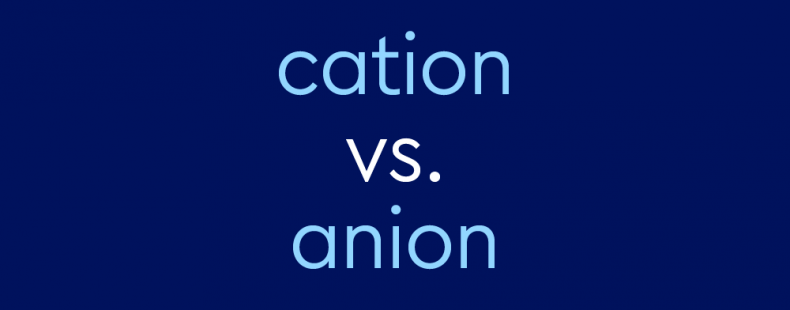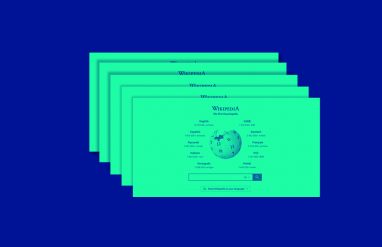An anion, pronounced [ an-ahy-uhn ], is a type of ion—an electrically charged atom or group of atoms. A cation is a type of ion for cats (OK, fine, that’s not true, but it is pronounced [ kat-ahy-uhn ] ). But seriously: anions and cations are both ions. The difference is in the electrical charge. Anions have a negative charge, and cations have a positive charge.
Before we talk about what exactly that means (and why it matters), let’s talk about what we mean by charge. Electric charge is a basic property of elementary particles of matter (protons, electrons, and neutrons). The protons in an atom have a positive charge, the electrons have a negative charge, and the neutrons have zero charge.
In an ordinary atom, the number of protons equals the number of electrons, so the atom normally has no electric charge one way or the other. An atom becomes negatively charged if it gains extra electrons, and it becomes positively charged if it loses electrons. We use the word ion to refer to atoms that have a charge one way or another, and we use the words cation and anion to specify whether the charge is positive or negative.
⚡️ Quick summary
Cations are positively-charged ions (atoms or groups of atoms that have more protons than electrons due to having lost one or more electrons). Anions are negatively-charged ions (meaning they have more electrons than protons due to having gained one or more electrons). Cations are also called positive ions, and anions are also called negative ions.
What is a cation?
A cation is an ion with positive charge, which means it has more protons (positively-charged particles) than electrons (negatively-charged particles). Cations are formed when an atom loses one or more electrons: the loss of the negatively-charged electron(s) results in an overall positive charge.
What is an anion?
An anion is an ion with negative charge, meaning it has more electrons than protons. Anions are formed when an atom gains one or more electrons: the gain of the negatively-charged electron(s) results in an overall negative charge.
What is the difference between cations and anions?
The difference between cations and anions is, of course, their charge. But this difference in charge has an impact on how cations and anions behave and react.
One example is in the process of electrolysis, which involves an electric current passing through a material and producing a chemical reaction. During electrolysis, the positively charged cations are attracted to a negatively-charged electrode called a cathode. Anions are attracted to a positively-charged electrode called an anode.
In chemistry, cations are indicated with a plus sign (+) and anions are indicated with a minus sign (-), with the number of symbols indicating the number of electrons lost or gained (this is called an atom’s valence). For example, the symbols Na+ and Ca++ indicate cations, while Cl- indicates an anion.
Where do the words cation and anion come from?
The first records of the words cation and anion in English come from around the 1830s. Cation comes from the Greek katión, meaning “going down,” and anion comes from the Greek aniṓn, “going up.” The cat- in cation is a form of cata-, meaning “down” (it’s the same root used in cathode and catalyst). The an- in anion is a form of ana-, meaning “up” (it’s the same root used in anode). The word ion comes from the Greek ión, meaning “going,” and was introduced by English physicist and chemist Michael Faraday in the 1830s.
Remember: the number of electrons in a cation has gone down, resulting in a positive charge. The number of electrons in an anion has gone up, resulting in a negative charge.
Is oxygen a cation or an anion?
Many elements can take the form of either anions or cations depending on the situation. Oxygen often exists in a neutral state, but oxygen atoms tend to form anions by gaining two electrons. Atoms of other elements also tend to form anions, including nitrogen, chlorine, and fluorine, among others. By contrast, atoms of calcium, magnesium, aluminum, and sodium tend to lose electrons and form cations. Sodium chloride—what we know as table salt—is actually composed of an anion and a cation (written as NA+CL-).
How to use cation vs. anion
Remember, cations are positive ions—they are positively charged because they have lost one or more electrons and therefore have more protons than electrons.
Anions are negative ions—they are negatively charged because they have gained one or more electrons and therefore have more electrons than protons.
When you’re taking your chemistry test, just remember that cats are always a positive thing.














